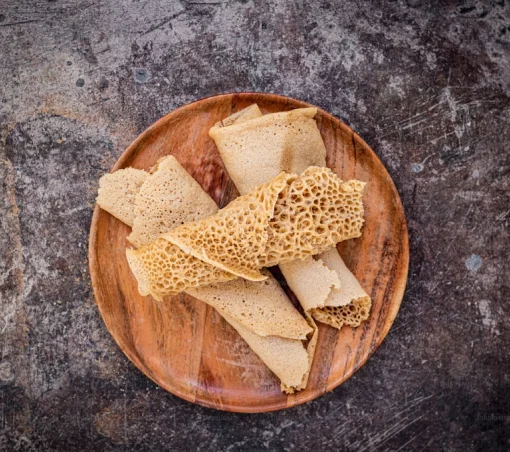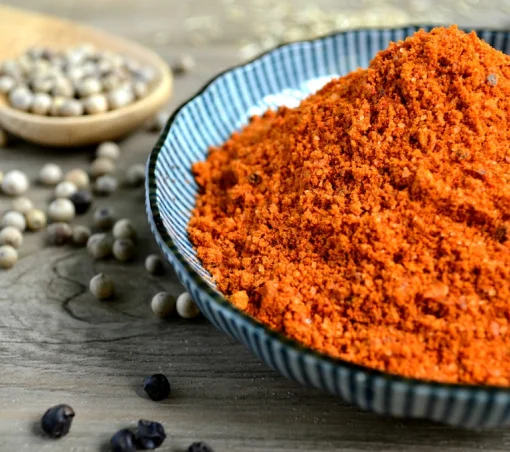Injera, the iconic Ethiopian flatbread, is more than just a staple food—it’s a cultural symbol deeply rooted in Ethiopian and Eritrean traditions. Made from teff, an ancient gluten-free grain, injera has a unique tangy flavor and a spongy texture that sets it apart from other breads. It serves as both a plate and a utensil, used to scoop up stews, vegetables, and other delicious dishes.
Achieving the perfect injera requires patience and skill. The fermentation process, which gives injera its signature sour taste, is a delicate art that has been passed down through generations. From the right consistency of the batter to cooking it on a mitad (a traditional griddle), every step matters. The result is a beautifully bubbled bread with a slightly crisp edge and soft center, perfect for any traditional Ethiopian meal.
HOW TRADITION SHAPES THE PROCESS
The journey to making injera starts with teff flour, water, and time. Fermentation is at the heart of the process, lasting anywhere from two to three days. This natural leavening not only develops the signature flavor but also makes the injera more digestible, reflecting a deep understanding of nutrition in Ethiopian cuisine.
Cooking injera is another art in itself. The mitad must be at just the right temperature to create those characteristic “eyes” or bubbles on the surface. A lid traps the steam, ensuring the injera cooks evenly without flipping. Experienced cooks know exactly when to remove it by its texture and aroma.


The journey to making injera starts with teff flour, water, and time. Fermentation is at the heart of the process, lasting anywhere from two to three days. This natural leavening not only develops the signature flavor but also makes the injera more digestible, reflecting a deep understanding of nutrition in Ethiopian cuisine.
Cooking injera is another art in itself. The mitad must be at just the right temperature to create those characteristic “eyes” or bubbles on the surface. A lid traps the steam, ensuring the injera cooks evenly without flipping. Experienced cooks know exactly when to remove it by its texture and aroma.
Injera is more than food—it’s a communal experience. Traditionally, meals are served on a large injera placed at the center of the table, with family and friends sharing from the same platter. This act of sharing embodies a spirit of togetherness that is integral to Ethiopian culture.







